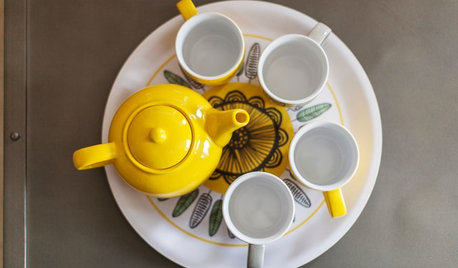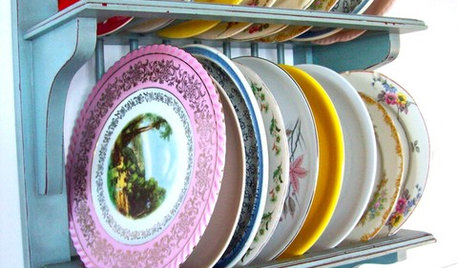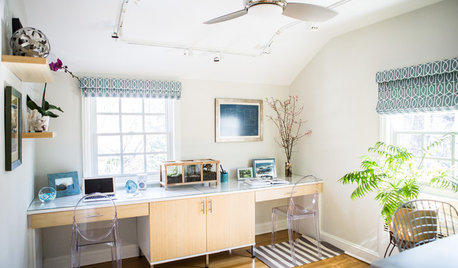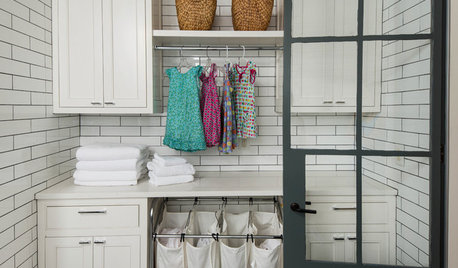Gritty Mix - Adjusting
clairecathy
13 years ago
Related Stories

DECORATING GUIDESHouzz Tour: A Historic House Gets a Feng Shui Adjustment
In a Massachusetts seaside town, a traditional home is redecorated in a playful style and with attention to flow and balance
Full Story
KITCHEN DESIGNNew This Week: 2 Kitchens That Show How to Mix Materials
See how these kitchens combine textures, colors and materials into a harmonious whole
Full Story
HOMES AROUND THE WORLDHouzz Tour: Gray and Yellow Mix It Up in a London Apartment
A neutral palette gets a jolt of energy from sunny accessories and witty artwork in this new unit in an industrial area
Full Story
APARTMENTSMy Houzz: High Style and Discount Finds Mix in a San Francisco Rental
With combined styles, an elegant palette and a stellar bay view, this hilltop apartment is a vision of loveliness
Full Story
ENTERTAININGMix Your Plates for Memorable Table Settings
Hodgepodges are happenin’ — learn how to combine different-style dishes, silverware and glassware for a highly personal look
Full Story
HOME OFFICESNew This Week: 3 Home Offices That Know How to Work It
We look at the designers’ secrets, ‘uh-oh’ moments and nitty-gritty details of 3 great home offices uploaded to Houzz this week
Full Story
LAUNDRY ROOMSSoak Up Ideas From 3 Smart Laundry Rooms
We look at the designers’ secrets, ‘uh-oh’ moments and nitty-gritty details of 3 great laundry rooms uploaded to Houzz this week
Full Story
HOUSEKEEPING10 Tips to Streamline Laundry Day
Little adjustments to your attitude and routine can help take the wrinkles out of doing the wash
Full Story
MOST POPULARMeet a Lawn Alternative That Works Wonders
Carex can replace turfgrass in any spot, is low maintenance and adjusts easily. Add its good looks and you’ve got a ground cover winner
Full Story
FURNITURENew Classics: The LEM Piston Stool
Adjustable Kitchen Barstools Bring Curvy Lines to Modern Spaces
Full StorySponsored
Industry Leading Interior Designers & Decorators in Franklin County
More Discussions









tapla (mid-Michigan, USDA z5b-6a)
clairecathyOriginal Author
Related Professionals
Cottonwood Landscape Architects & Landscape Designers · Chattanooga Landscape Contractors · Commack Landscape Contractors · Euclid Landscape Contractors · Middleton Landscape Contractors · North Potomac Landscape Contractors · Welby Landscape Contractors · Selma Landscape Contractors · Titusville Solar Energy Systems · Lees Summit Window Contractors · Emeryville Window Contractors · Cherry Hill Fence Contractors · Hammond Fence Contractors · Oldsmar Fence Contractors · Woodland Hills Fence Contractorstapla (mid-Michigan, USDA z5b-6a)
clairecathyOriginal Author
tapla (mid-Michigan, USDA z5b-6a)
clairecathyOriginal Author
tapla (mid-Michigan, USDA z5b-6a)
clairecathyOriginal Author
clairecathyOriginal Author
greenman28 NorCal 7b/8a
clairecathyOriginal Author
cebury
clairecathyOriginal Author